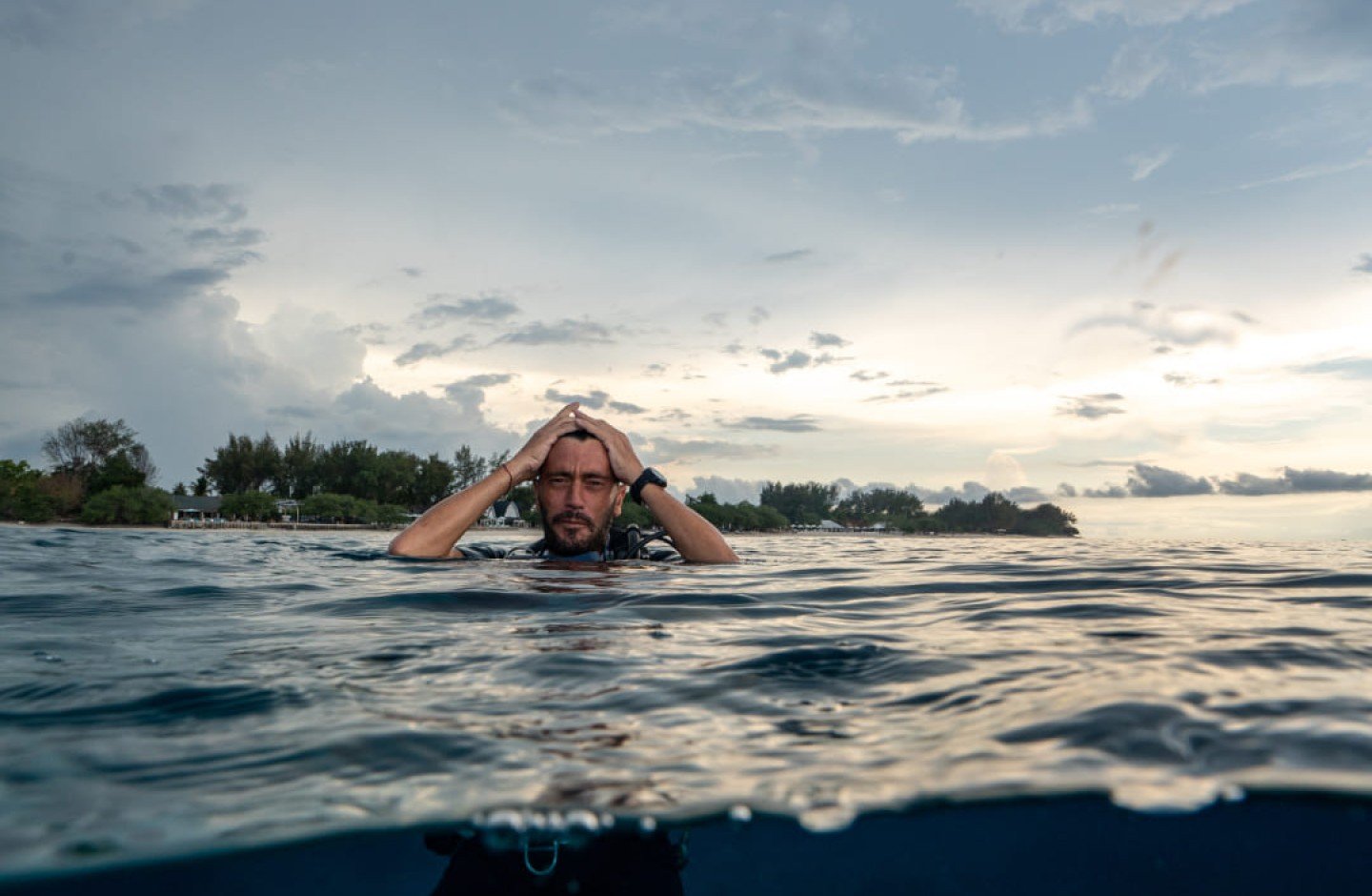Methods of Equalisation
No diver wants to go through the pain, or recovery time, associated with either of the above injuries. That is why it is so important to practice safe equalisation techniques. There are many different techniques available for divers to equalise. The most common method taught to open water divers is the Valsalva maneuver. However, there are other methods and tricks that you can utilise. The key is finding what works best for you as a diver.
Valsalva Maneuver - Pinch Your Nose and Blow
This is the method most divers learn. To execute it, you pinch your nostrils (or close them against your mask skirt) and blow through your nose. The resulting over-pressure in your throat forces air up your Eustachian tubes.
There are three major problems with this method, though. The first being that it does not activate the muscles of your ear. Instead, it forces air up the Eustachian tubes to open them. This means that it will not work if your tubes are already blocked, and could actually cause damage if they are. The second major issue is that blowing against a blocked nose increases your internal fluid pressure. This can result in a blowout of the round windows, and a lot of pain. So you should never blow too hard, nor maintain the pressure for more than five seconds. The last issue with the Valsalva is that it is very easy to use too much force in an attempt to equalise, and cause damage. Remember, if you are using the Valsalva method, you want a gentle constant blow.
Other Techniques for Equalisation
If the Valsalva method isn't working for you, don't worry. There are a number of alternative techniques available to help you equalise. Many of them will feel unnatural at first, so practice will make perfect here. Your ears will thank you for it.
Voluntary Tubal Opening
Tense the muscles of the soft palate and the throat while pushing the jaw forward and down as if you are starting to yawn. The activation of these muscles helps pull the Eustachian tubes open.
Toynbee Maneuver
With your nostrils pinched or blocked against your mask skirt, swallow. Swallowing pulls open your Eustachian tubes, while the movement of your tongue, with your nose closed, compresses air against them.
Frenzel Maneuver
Close your nostrils, and close the back of your throat as if you are straining to lift a weight. Then make the sound of the letter "K." This forces the back of your tongue upward, compressing air against the openings of your Eustachian tubes.
Lowry Technique
A combination of Valsalva and Toynbee: while closing your nostrils, blow and swallow at the same time.
Edmonds Technique
While tensing the soft palate (the soft tissue at the back of the roof of your mouth) and throat muscles and pushing the jaw forward and down, do a Valsalva maneuver.
Additional Tricks
Below are a few other common tricks that can be utilised alongside the above techniques.
- Wiggle your jaw back and forth
- Tilt your head from side to side
- Massage your ears/Eustachian tubes
- Blow out of each nostril independently
- Take off your mask, clear your nose and equalise. Then place mask back on and try and clear again.
With all the above techniques, the most important rule is to stop and slowly ascend a few metres if you encounter any pain. Usually adjusting the depth by a few metres is all a diver will need to achieve that “pop” or “click” and equalisation. If this doesn’t work, slowly go up another metre or two and try again. Do not try to push through the pain. You will likely only regret it later.



